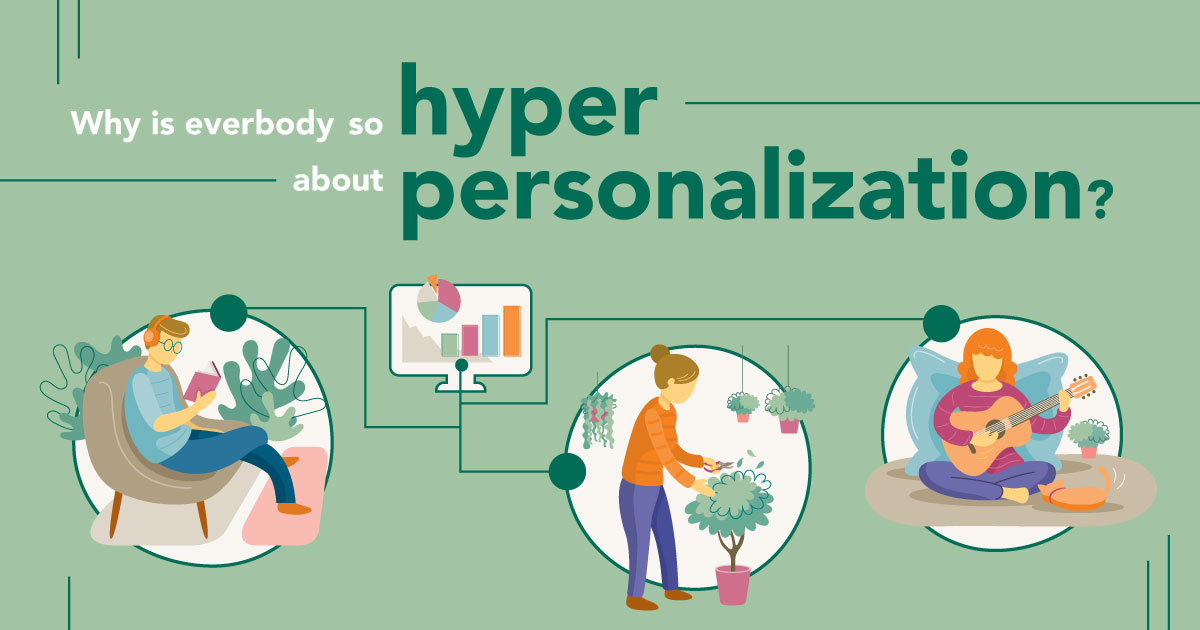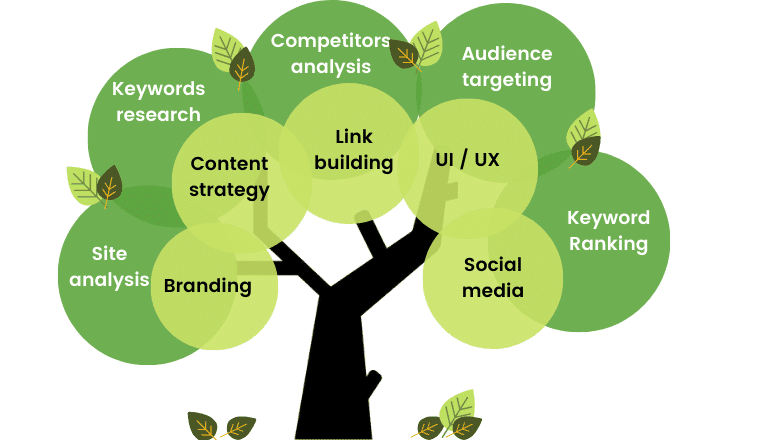Why Brands Need to Embrace Hyper-Personalization to Stay Relevant
If you need assistance with implementing hyper-personalization in your brand strategy, contact us today. Our team of experts can help you leverage the latest technologies and insights to create personalized experiences that resonate with your audience and drive success.

In an increasingly digital world, where consumers are inundated with choices and information, hyper-personalization has emerged as a crucial strategy for brands aiming to remain relevant and competitive. Unlike traditional personalization, which offers a one-size-fits-all approach, hyper-personalization leverages data and technology to deliver highly customized experiences, products, and communications. Here’s why brands need to embrace hyper-personalization to stay ahead in the market.
Understanding Hyper-Personalization
Definition
Hyper-personalization refers to the use of advanced data analytics, artificial intelligence (AI), and machine learning to deliver highly customized content, products, and experiences to individual customers. It goes beyond traditional personalization by considering a wider range of data points and using real-time insights to create more relevant and meaningful interactions.
Differences from Traditional Personalization
- Traditional Personalization: Often based on broad customer segments or historical data, such as using a customer’s name in emails or recommending products based on past purchases.
- Hyper-Personalization: Utilizes real-time data, behavioral insights, and predictive analytics to tailor every aspect of the customer experience, from product recommendations to communication style and timing.
The Benefits of Hyper-Personalization
Enhanced Customer Experience
Hyper-personalization leads to a more tailored and engaging customer experience:
- Relevance: By delivering content and offers that are highly relevant to individual preferences and behaviors, customers are more likely to engage positively with the brand.
- Convenience: Personalized experiences can make interactions with the brand more convenient, such as offering relevant recommendations and simplifying decision-making processes.
Increased Customer Loyalty
Brands that embrace hyper-personalization can build stronger customer relationships:
- Personal Connections: Tailored experiences foster a sense of personal connection, making customers feel valued and understood.
- Retention: Satisfied customers are more likely to return and remain loyal, leading to higher customer retention rates.
Improved Marketing Effectiveness
Hyper-personalization enhances the effectiveness of marketing efforts:
- Higher Engagement: Personalized content and offers result in higher engagement rates, as customers are more likely to interact with content that resonates with their interests and needs.
- Better Conversion Rates: By presenting relevant offers and recommendations, brands can drive higher conversion rates and increase sales.
Competitive Advantage
In a crowded marketplace, hyper-personalization provides a competitive edge:
- Differentiation: Brands that offer highly personalized experiences can stand out from competitors and create a unique value proposition.
- Innovation: Embracing advanced technologies for personalization signals innovation and forward-thinking to customers.
Implementing Hyper-Personalization
Collect and Analyze Data
Effective hyper-personalization starts with data collection and analysis:
- Data Sources: Gather data from various sources, including website interactions, purchase history, social media activity, and customer feedback.
- Analytics: Use advanced analytics tools to analyze data and identify patterns, preferences, and behaviors.
Utilize Advanced Technologies
Leverage technology to enable hyper-personalization:
- Artificial Intelligence (AI): AI can analyze large volumes of data, predict customer preferences, and deliver personalized recommendations in real-time.
- Machine Learning: Machine learning algorithms can continuously learn from customer interactions and refine personalization strategies.
Personalize Across Channels
Ensure a consistent and personalized experience across all touchpoints:
- Website: Offer personalized content, product recommendations, and dynamic pricing based on user behavior and preferences.
- Email Marketing: Send personalized emails with relevant offers, content, and product recommendations based on customer data.
- Social Media: Tailor social media content and advertisements to individual preferences and behaviors.
Continuously Optimize
Hyper-personalization is an ongoing process:
- Monitor Performance: Regularly track and analyze the performance of personalized campaigns and experiences.
- Adjust Strategies: Use insights to continuously refine and improve personalization strategies.
Overcoming Challenges in Hyper-Personalization
Data Privacy and Security
Challenge: Handling sensitive customer data raises privacy and security concerns. Solution: Ensure compliance with data protection regulations, implement robust security measures, and be transparent with customers about data usage.
Data Integration
Challenge: Integrating data from various sources can be complex. Solution: Use advanced data management platforms to consolidate and analyze data from multiple sources.
Balancing Personalization and Automation
Challenge: Maintaining a balance between automated personalization and a human touch. Solution: Combine automated personalization with opportunities for human interaction to provide a more comprehensive and engaging experience.
Case Studies of Successful Hyper-Personalization
Amazon
Amazon is a leader in hyper-personalization, using data from browsing and purchase history to recommend products tailored to individual preferences. The company’s recommendation engine significantly boosts sales and enhances the customer experience.
Netflix
Netflix employs hyper-personalization to offer customized content recommendations based on viewing history, preferences, and ratings. This approach has been instrumental in retaining subscribers and increasing user engagement.
Starbucks
Starbucks uses data from its loyalty program and mobile app to deliver personalized offers and recommendations. The company’s approach enhances customer loyalty and drives repeat purchases.
The Future of Hyper-Personalization
Emerging Technologies
Future advancements in technology will further enhance hyperpersonalization.
- Artificial Intelligence (AI) and Machine Learning: Continued improvements in AI and machine learning will enable even more precise and dynamic personalization.
- Augmented Reality (AR) and Virtual Reality (VR): AR and VR technologies will offer immersive personalized experiences in retail and other industries.
Evolving Customer Expectations
As customers become more accustomed to personalized experiences, their expectations will continue to evolve:
- Greater Customization: Customers will expect increasingly tailored experiences and offers.
- Ethical Considerations: Brands will need to address ethical considerations related to data usage and privacy.
Final Thought
Embracing hyper-personalization is no longer optional for brands aiming to stay relevant in today’s competitive market. By leveraging advanced data analytics and technology, brands can deliver highly customized experiences that enhance customer satisfaction, drive engagement, and build loyalty. However, it’s essential to navigate challenges such as data privacy and integration while continuously optimizing personalization strategies.
If you need assistance with implementing hyper-personalization in your brand strategy, contact us today. Our team of experts can help you leverage the latest technologies and insights to create personalized experiences that resonate with your audience and drive success.
FAQ:
1. What is hyper-personalization?
Hyper-personalization is the process of using advanced data analytics, artificial intelligence (AI), and machine learning to deliver highly customized content, products, and experiences to individual customers. Unlike traditional personalization, which uses broad customer segments, hyper-personalization focuses on creating unique experiences based on real-time data and individual behavior.
2. How does hyper-personalization differ from traditional personalization?
- Traditional Personalization: Typically involves basic techniques such as using a customer’s name in communications or recommending products based on past purchases. It often relies on segmenting customers into broad categories.
- Hyper-Personalization: Uses detailed data from various sources (e.g., browsing behavior, social media activity) and advanced algorithms to create highly tailored experiences for each individual in real-time.
3. Why is hyper-personalization important for brands?
Hyper-personalization is important because it:
- Enhances Customer Experience: Provides more relevant and engaging interactions, making customers feel valued.
- Increases Loyalty: Builds stronger relationships and drives repeat business by catering to individual preferences.
- Improves Marketing Effectiveness: Boosts engagement and conversion rates through more targeted and relevant marketing efforts.
- Offers Competitive Advantage: Differentiates the brand in a crowded market by delivering unique and memorable experiences.
4. What data is required for hyper-personalization?
For effective hyper-personalization, brands need to collect and analyze data such as:
- Customer Behavior: Browsing history, purchase history, and interaction patterns.
- Demographics: Age, gender, location, and other relevant personal information.
- Preferences: Product preferences, content interests, and past feedback.
- Real-Time Data: Current actions and behaviors, such as recent searches or clicks.
5. How can brands implement hyper-personalization?
Brands can implement hyper-personalization by:
- Collecting Data: Gather comprehensive data from various touchpoints and channels.
- Using Technology: Employ AI, machine learning, and analytics tools to process and interpret data.
- Personalizing Interactions: Customize content, product recommendations, and communications based on individual data.
- Ensuring Consistency: Provide a cohesive and personalized experience across all channels and touchpoints.
6. What are some examples of successful hyper-personalization?
- Amazon: Uses browsing and purchase history to recommend products tailored to each user’s preferences.
- Netflix: Provides content recommendations based on viewing history and user ratings.
- Starbucks: Delivers personalized offers and recommendations through its loyalty program and mobile app.
7. What challenges might brands face with hyper-personalization?
Challenges include:
- Data Privacy and Security: Managing and protecting sensitive customer data while complying with privacy regulations.
- Data Integration: Combining data from multiple sources to create a unified view of the customer.
- Balancing Automation and Human Touch: Ensuring that automated personalization efforts do not replace valuable human interactions.
8. How can brands address data privacy concerns in hyper-personalization?
Brands can address data privacy concerns by:
- Compliance: Adhering to data protection regulations such as GDPR or CCPA.
- Transparency: Clearly communicating to customers how their data is used and obtaining their consent.
- Security Measures: Implementing robust security protocols to protect customer data.
9. How often should brands update their hyper-personalization strategies?
Brands should regularly review and update their hyper-personalization strategies to:
- Reflect Changing Preferences: Adapt to evolving customer preferences and behaviors.
- Incorporate New Data: Utilize new data sources and insights for more accurate personalization.
- Address Market Trends: Keep pace with industry trends and technological advancements.
10. Can hyper-personalization be effective for all types of businesses?
Yes, hyper-personalization can be effective for various types of businesses, including:
- Retail: Enhances shopping experiences and boosts sales through personalized recommendations.
- Services: Tailors service offerings and communications to individual needs and preferences.
- B2B: Customizes solutions and interactions based on specific business requirements and client data.
11. How can I get started with hyper-personalization for my brand?
To get started with hyper-personalization:
- Assess Your Data: Evaluate the data you currently collect and identify any gaps.
- Choose the Right Tools: Select technology and analytics tools that support hyper-personalization.
- Develop a Strategy: Create a plan for how to use data and technology to personalize customer interactions.
- Monitor and Optimize: Track the performance of your personalization efforts and make adjustments as needed.
12. Where can I find help with implementing hyper-personalization?
You can find help with implementing hyper-personalization from:
- Consulting Firms: Experts specializing in data analytics, AI, and personalization strategies.
- Technology Providers: Companies offering tools and platforms for data analysis and personalized marketing.
- Our Team: Contact us today to learn how we can assist you in leveraging hyper-personalization to enhance your brand’s customer experience and drive success.
Get in Touch
Website – https://www.webinfomatrix.com
Mobile - +91 9212306116
WhatsApp – https://call.whatsapp.com/voice/9rqVJyqSNMhpdFkKPZGYKj
Skype – shalabh.mishra
Telegram – shalabhmishra
Email - info@webinfomatrix.com
What's Your Reaction?




















